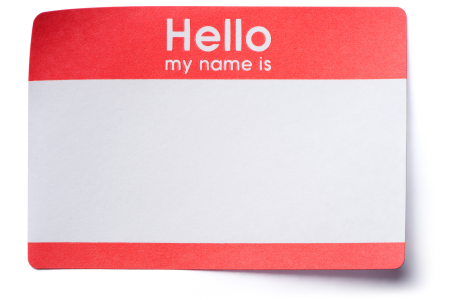Be careful using names
When should you use subscribers’ names in e-zines and email blasts?

After all, there are plenty of good reasons for personalizing emails:
- People are most interested in personal email messages, as well as in messages from organizations they’re affiliated with, according to a study by MailChimp.
- Some 28% of U.S. internet users would be more loyal to a brand if its email messages were personalized, according to a survey by Fresh Relevance and YouGov.
- And given all the tools for email customization out there, readers have grown accustomed to receiving personalized messages. Ignoring this can make it look like you’re behind the curve.
But name-calling in emails can be cheesy — even creepy — if you don’t handle it well. So use recipients’ and subscribers’ names only when you:
1. Have an established relationship.
Do subscribers have an account at your bank? Have they flown on one of your planes? Purchased one of your books?
Then go ahead: Call them by name.
And, given that you have this relationship, you probably know a few things about your subscribers. Use that information to truly personalize your material.
(Note: The recipient’s signing up for your e-zine does not constitute a relationship with the subscriber.)
2. Won’t offend subscribers with informality, fake familiarity or errors.
People know that a computer somewhere — and not the sender herself — attached that name to that email.
Using recipients’ names doesn’t make them feel special. Instead, it can feel cheesy. (It can also make recipients wonder what else you know about them.)
Plus, be careful with errors. If subscribers misspell, fail to capitalize or insert a fake name during the subscription process, you, too will misspell, fail to capitalize or insert a fake name when you email them. (And don’t get me started on “Dear Email.”)
Pro tip: Allow subscribers to change the name you use to address them in an Update profile link right from the e-zine.
3. Offer customized — and not just personalized — content.
Personalize your email message if you are delivering information:
- That subscribers requested on the sign-up page
- Based on subscribers’ buying or search history
- Targeted to subscribers’ location
In these cases, using subscribers’ names will help signal that they’re receiving customized information.
Aeroplan, for instance, sent out a newsletter that included recipients’ rewards balance and points history along with its current promotions. It used the recipients’ full name on the subject line and in the body of the email.
And Groupon’s daily newsletter listed deals only from the users selected city, making the information more useful and relevant.
That’s customized, not just personalized.
Note that including some information — names and partial account numbers, for instance — can distinguish your message from a phishing expedition and assure subscribers that you are who you claim to be.
Learn more about personalizing email subject lines:
- Tailor, don’t personalize, email subject lines: Don’t use their names unless you also customize content
- How to tailor email subject lines: Take personalization beyond name-calling
- Don’t personalize, localize email subject lines: Avoid ‘Ann, your e-zine is here’
What techniques do you use to personalize emails?
___
Sources: Kim Flaherty, Amy Schade, and Jakob Nielsen; Marketing Email and Newsletter Design to Increase Conversion and Loyalty, 6th Edition; Nielsen Norman Group, 2017
“What are some best practices in writing email subject lines?” MailChimp, Dec. 8, 2014

Leave a Reply